John Henry Martin, 1842 – 1881
by Brian Stevenson
last updated June, 2017
John H.
Martin produced a variety of reasonable quality microscope
slides during the 1860s and 1870s (Figure 1). He began advertising for objects
suitable for making slides in the mid-1860s (Figure 3). Through at least 1877,
Martin sold and exchanged both prepared slides and unmounted objects. By the
spring of 1881, at the age of 38, he was dead, probably from tuberculosis.
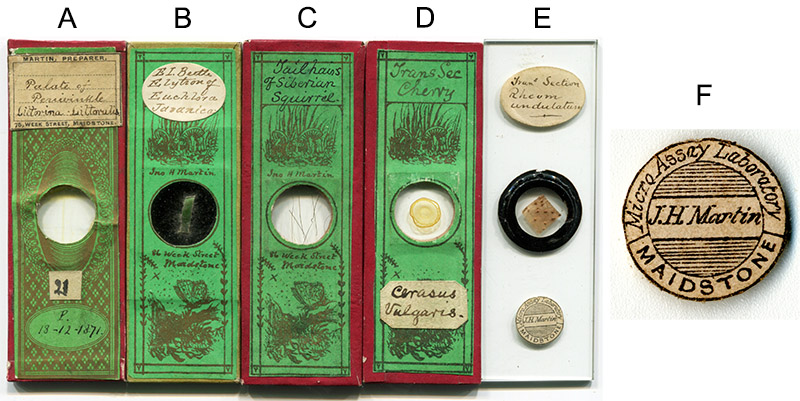
Figure 1. Examples of microscope slides produced by John H. Martin. The addresses on his slides allow them to be dated.
(A) 78 Week Street, Maidstone, his parents’ home. Martin is known to have requested specimens for making slides in 1865. He lived here until at least the middle of 1867. The date of 18 Dec., 1871 is in another hand, and probably indicates when an owner acquired this
slide.
(B and C) 86 Week Street,
Maidstone. Martin advertised slides for exchange from this address in early
1869. The absence of a Micro-Assay Laboratory label suggests production prior
to 1873. The design on the custom-made paper was probably created by Martin, as
the style of drawing is very similar to that done by him in his books on
microscopy. 86 Week Street was a multifunctional building, and simultaneously
housed several families, businesses and societies.
(D) Rarely seen, the same paper as B and C, but without Martin’s name or address.
(E) Label of Micro-Assay Laboratory, Maidstone. This business operated from
Martin’s home, at 86 Week Street, and was running by 1873. Martin moved to
London after April, but before November, 1877. I am not aware of any Martin
slides with the London address, so it is not clear if he continued to supply
slides after 1877.
(L 1.0F) Magnified view of a Micro-Assay Laboratory label. Contemporary slide maker Henry Vial used circular labels identical in style to Martin’s Micro-Assay Labels, and is known to have used pattered papers very similar in pattern to that shown in panel B, indicating close interactions between the two microscopists.
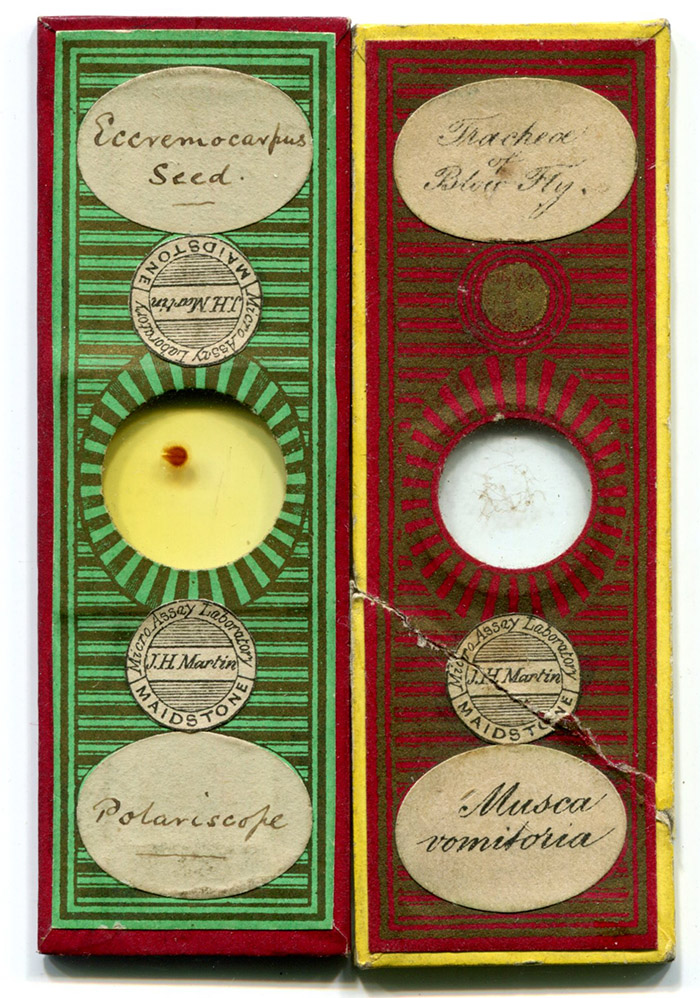
Figure 2. Martin was not above re-labeling other people’s work for resale. These slides were made by Edmund Wheeler, but Wheeler’s monograms have been covered over with Martin’s label or other stickers. This practice was not an uncommon practice among slide-sellers. This site’s biography of John T. Norman includes a photo of a slide that was relabeled by Wheeler, then re-labeled by Norman, as well as two other slides re-labeled by Norman (see Figure 9 of J.T. Norman).
John Henry
Martin was born during the summer of 1842 in Maidstone, Kent, the second son of
John and Caroline Martin. Father John was a cabinet maker, upholsterer and
picture frame maker. The elder son, Albert, took up his father’s trade, and
later took over the family business. The Martin business apparently did
relatively well – the 1861 census recorded that John Martin Sr. employed 2 men
and 3 apprentices (the two sons plus four other people), and the family
employed a domestic servant.
In 1865,
23 year-old John H. Martin offered to exchange echinus (sea urchin) spines with
other biologists (Figure 3A). Over the next four years, his exchange offers
also included whale bone (baleen) section and asparagus beetles. By May, 1869,
Martin was offering prepared slides (Figure 3B).

Figure 3. Advertisements and exchange offers from J.H. Martin.
(A) The earliest known advertisement
from Martin, from the September, 1865 issue of Hardwicke’s Science-Gossip. The
letter “T” was clearly a typographical error – there was nobody with the first
initial “T” in the Martin household. Spines of Echinus (sea urchin) were very
popular objects for microscope slides, especially when cut in cross-section.
(B) Martin’s earliest identified
advertisement for prepared slides. Brian Bracegirdle’s ‘Microscopical Mounts
and Mounters’ shows a slide with this same specimen description, with the
address 78 Week St., Maidstone (plate 25, slide H).
(C) From an 1872 issue of Hardwicke’s Science-Gossip, an exchange
offer for an unmounted specimen. Such unmounted objects appear to have
constituted a significant proportion of Martin’s sales/exchanges.
(D) The slide illustrated in Figure 1C
(above), a tissue specimen, may have been made possible by an advertisement
such as this.
(E). An international
venture by John Martin, to provide unmounted objects to the U.S.A., from The
Monthly Microscopical Journal
The
Maidstone and Mid-Kent Natural History Society met for its first general
meeting on May 18, 1869. Regular meetings were held at the home of the
Society’s Secretary, John. H. Martin, at 86 Week Street, Maidstone. Martin’s
report of the meeting to the Monthly
Microscopical Journal was apparently a bit long-winded, as the printed
report was footnoted: “The Secretary
would much oblige us by in future forwarding a brief abstract of the meetings.
The task of employing the scissors on a long newspaper report, which has on
this occasion fallen to our lot, is not a pleasant one, and it takes up much
time.—Ed. M. M. J.”.
John
Martin wrote two books on microscopy. The first, Microscopic Objects Figured and Described, was published in 1870.
It was initially released in monthly installments, consisting of drawings of
objects as seen through the microscope with accompanying descriptions of the
specimens. A comment in the January 1, 1870 issue of the Monthly Microscopical Journal was cautiously optimistic:
“A New Treatise on Microscopic Objects. Mr. Van Voorst is about to issue a very comprehensive treatise on Microscopic Objects. The Author is Mr. J. H. Martin, Secretary to the Maidstone
and Mid-Kent Natural History Society. The first part was to have been
issued on the 1st of this month. Each part will contain eight plates and eight
pages of text. The whole number of figures will be 200, and we cannot help
thinking that Mr. Van Voorst will have to exert more than his ordinary skill as
a scientific publisher, if he contrives to include the whole range of histology
in these. The figures will be faithful drawings of the structures as they
appear when as nearly as possible filling the ordinary field of the microscope.
It is proposed to commence with the primary forms of Vegetable life, and to
proceed onwards through the tissues to the woody structures of the Exogens and
Endogens, next descending to the Acrogens, and so passing to the extreme limits
of vegetable life, as the Desmideae, &c.; hence to the lower forms of
Animal life, the Infusoria, and on through the Badiata to the Insects, which
will be drawn and described in their various orders, and the minute organs
figured separately. In the concluding Plates will be represented interesting
and characteristic geological structures, with some of the more curious forms
and groupings of crystals. The description of the objects will be brief, and,
as far as possible, void of technicalities; and no attempt will be made to
enter into details relating to their physiological action”.
Opinion of
the final product was extremely negative. Martin’s chief mistake was to make
all the drawings himself. He was not a particularly good artist, and his
drawings generally lack detail and are very two-dimensional. The review of
Martin’s book in the April, 1871 issue of the Monthly Microscopical Journal was both brilliant and vicious. On a
personal note, I am a scientist with approximately 90 publications to my
credit, and am very thankful that nobody ever gave me a review like this one.
The full review follows, accompanied by excerpts from Martin’s book (Figures 3
and 4):
“Microscopic Objects Figured and Described.
By John H. Martin, Honorary Secretary to the Maidstone and Mid-Kent Natural History Society. London:
Van Voorst. 1870. Apart altogether from our desire that Mr. Martin had not
written this work, we must express our regret that the publisher has sent it to
us for review. We say this because we suppose he insists on a notice, and it is
not in our power to say a single syllable in praise of the volume. It is
without any aim; it can serve no purpose; and it is altogether the worst thing
of the kind that we have ever seen. There is not, in the whole collection of
plates any one which is even fairly passable, and there are many which are as
truly execrable as it is possible to conceive. There are 194 drawings of
various objects without one that we can say is fairly executed, and indeed some
of them are so abominably handled that it is a matter of surprise to us that
the author - be he possessed of the smallest possible experience - should have
allowed them to appear. But, apart from this, the book is altogether aimless.
Every one, or nearly so, of the objects (with the exception of some of Mr.
Forbes's specimens at the end) have been done, and exceedingly well done,
before, in various treatises on Natural History and Histology. And even the
rock specimens have been in part done, and very admirably so, in an article
some years ago by Mr. Forbes, in the 'Popular Science Review’. We have never
beheld such abominable misrepresentations as the plates, for indeed there is
not the faintest depth in them; there is a horrible flatness about them which
gives one the idea of an ordinary drawing crushed out flat, so as to
effectually remove any traces of perspective. We should gladly have avoided
saying anything about the work at all, but it would be unfair to our readers to
pass any but a most unfavourable critique upon work which has been so execrably
handled”.

Figure 4. Title page, dedication and preface to John H.
Martin’s 1870 Microscopic Objects Figured and Described. Bowerbank was a high
ranking member of the Royal Microscopical Society and many other important
scientific societies. It is not known if Martin actually knew Bowerbank at that
time.
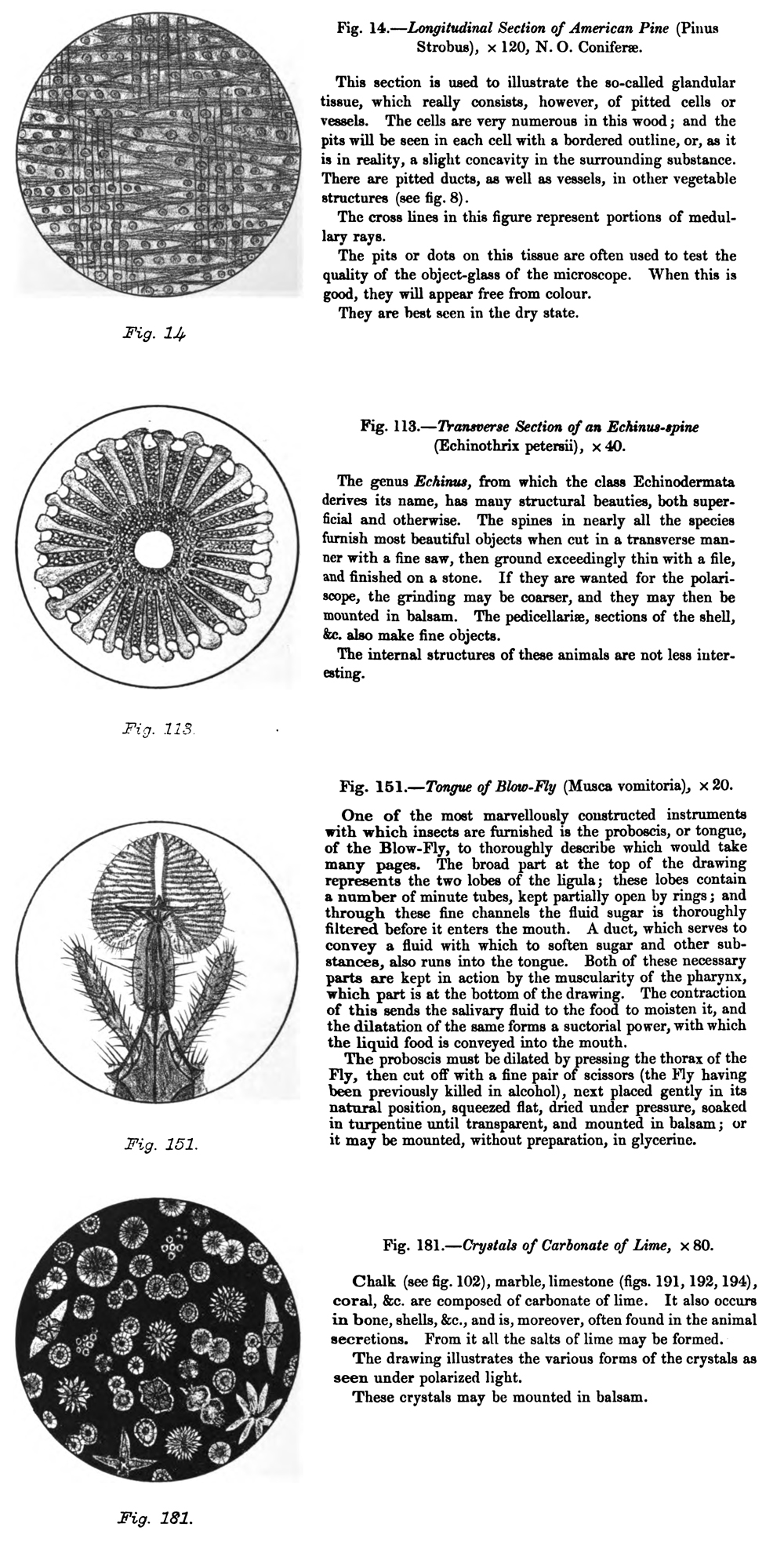
Figure 5. Four illustrations and accompanying texts from Martin’s
1870 Microscopic Objects Figured and Described. In the book, the illustrations
appear on one page, and the captions on another. John Martin did all the
artwork. The generally poor quality of his drawings overshadowed the text,
which included instructions in how to prepare the various objects.
For the
1871 census, Martin listed his occupation as “Prof(essor) Microscopy and Author”. Several other professional
microscopists, such as Amos Topping, similarly referred to themselves as “professor”. The 1872 Handy Directory and
Guide for Maidstone and the Surrounding Villages Within a Circle of Six Miles
recorded John H. Martin as “microscopist,
86, Week street”.
Despite
their objections to his 1870 book, John H. Martin was elected to be a Fellow of
the Royal Microscopical Society on December 9, 1874. This may have been made
possible by the 1872 publication of Martin’s second book, A Manual of Microscopic Mounting (Figures 6 and 7). This book wisely
focused on extensive descriptions of methods for mounting microscope slides,
and included far fewer of Martin’s drawings. The majority of his drawings were
sketches related to slide making, and while generally crude, were sufficient to
convey the necessary information. Artwork from professional illustrators was
also used, in particular, engravings from microscope makers’ catalogues. This
new book was evidently a success, and a second, revised edition was issued in
1878 (Figure 8).
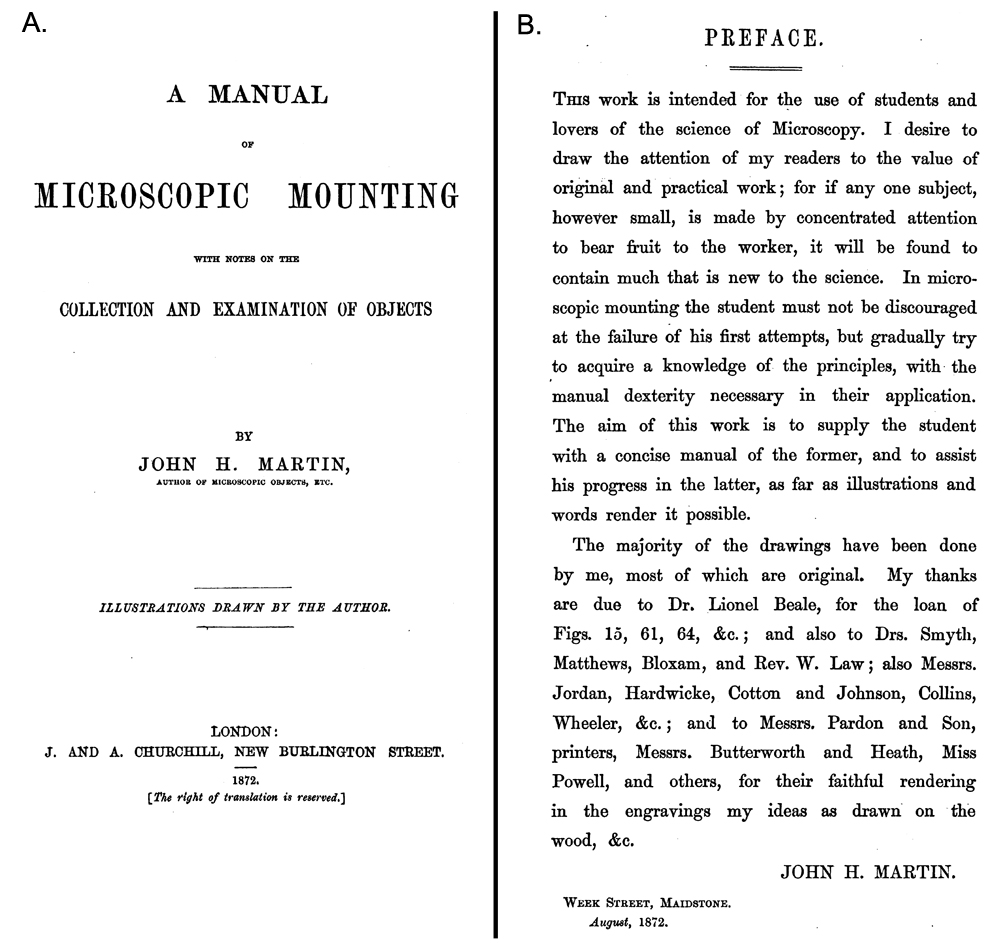
Figure 6. Title page and preface to John Martin’s 1872 Manual
of Microscopic Mounting. Note especially the acknowledgements to professionals
such as Beale, Collins and Wheeler for the use of images from their books and
catalogues.
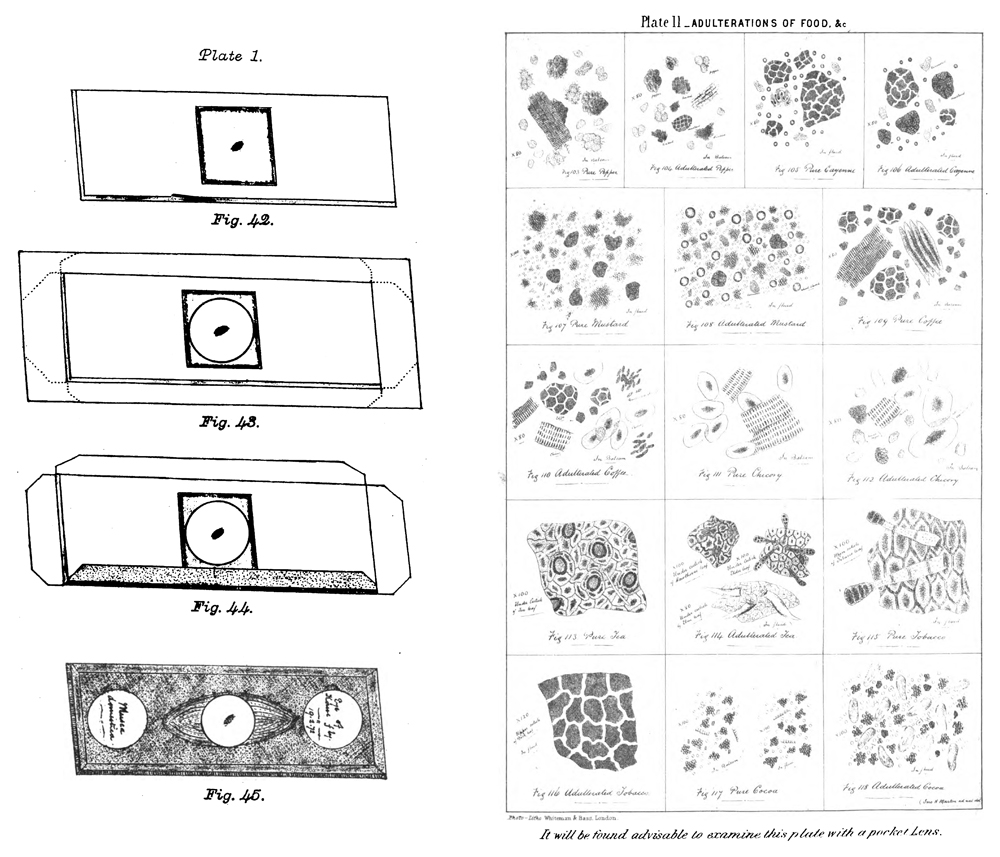
Figure 7. Two plates from Martin’s 1872 Manual of Microscopic
Mounting, both from drawings by Martin. The majority of Martin’s artwork in
this book is like the left plate, simplistic but nonetheless instructive. The
right plate, Martin’s drawings of adulterants that may be found in food, is of
dubious value.
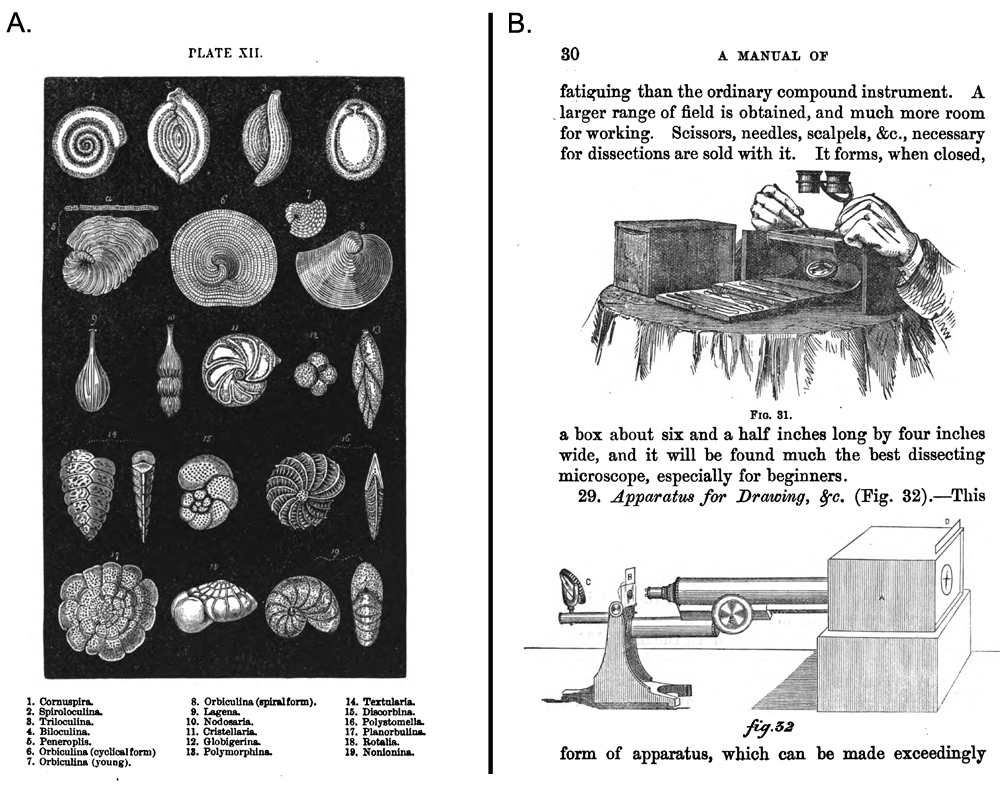
Figure 8. Two pages of illustrations from John Martin’s 1878 second
edition of Manual of Microscopic Mounting. This edition relied even more heavily
on professionally prepared drawings.
Martin formed a company, the Micro-Assay Laboratory, as a service to
evaluate customer’s foodstuffs and other products for contaminants. The
sketches of adulterants in Martin’s 1872 book (Figure 6, right panel) hint at
his interest in this use of the microscope. This business was in operation by
June, 1973, the earliest record I found for Martin’s use of the company name.
On June 20, 1873, the English Mechanic
and World of Science published a short article by Martin, on construction
of a flow chamber for cultivating water life, which gave his address as “Micro-Assay Laboratory, Maidstone
In early
1877, Martin made a bid for another line of work. The February 10, 1877 issue
of the Saturday Review of Politics,
Literature, Science and Art carried the following advertisement: “To NOBLEMEN and GENTLEMEN.—An AUTHOR, a
Fellow of the Royal Microscopical Society, &c, desires to ASSIST a Gentleman
in SCIENTIFIC RESEARCH; would also act as Private Secretary, &c; no
objection to travel - Further particulars, amount of salary required, and
first-class reference, address F.R.M.S., care of Jno. H. Martin, Esq., 86 Week Street, Maidstone”.
He was still
in Maidstone as of April, 1877, when Martin published an article in the English Mechanic and World of Science
from 86 Week Street. On November 16 of that year, Martin advertised that he and
the Micro-Assay Laboratory had move to London (Figure 9). The 1878, second
edition of A Manual for Microscopic
Mounting gave Martin’s address as “Micro
Assay Laboratory, York
Chambers, Adelphi, London, WC”.

Figure 9. Announcement of Martin’s move to London. From the
November 16, 1877 issue of Chemical News and Journal of Industrial Science.
Also on
November 16, 1877, John Martin was elected to the Society of Public Analysts.
The election announcement described him as being an “analytical chemist”.
The 1881
census found John Martin back in Maidstone, living with his parents. The census
was conducted at the end of March. John Henry Martin died April 6, 1881, at his
parents’ house. The recorded cause of death was “caries of vertebrae, fatty liver” certified by Charles Boyce M.B.
The caries (holes) in Martin’s vertebrae may have been a result of
extrapulmonary (miliary) tuberculosis with a concentration in the spine (Pott’s
disease). While fatty liver may indicate obesity or alcoholism, it might also
have been a consequence of nutritional deficiency related to tuberculosis.
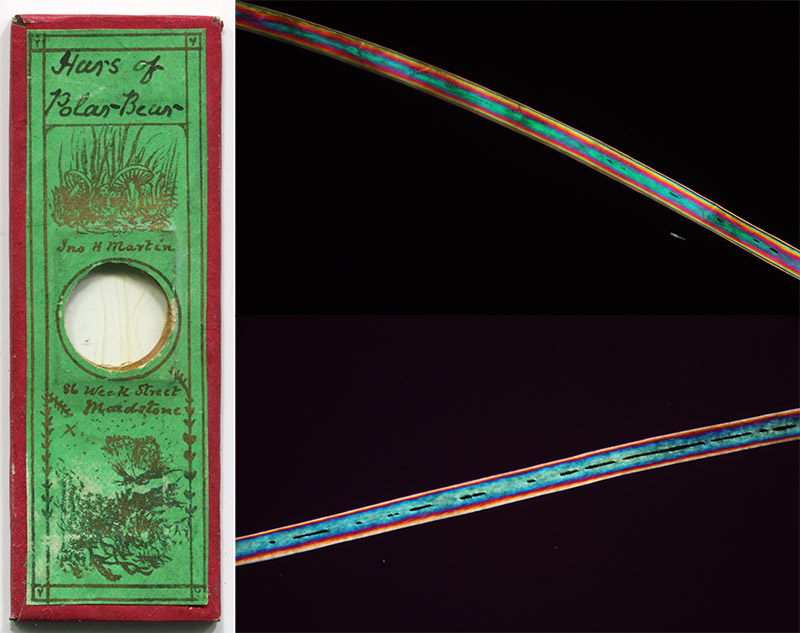
Figure 10. Hairs of a polar bear, viewed through crossed polarizing filters (polariscope), 10x objective lens.
Acknowledgements
Many thanks to Drs. James McCormick and Peter Paisley for
their thoughts on John Martin’s death record.
Resources
The American Naturalist (1874) Advertisement of unmounted objects by John H. Martin, Vol. 8,
page 316
Bracegirdle, Brian (1998) Microscopical
Mounts and Mounters, Quekett Microscopical Club, London, pages 65 and 154,
and plate 25
Chemical News and Journal of
Industrial Science (1877) Advertisement from John
Martin, Vol. 36, page 225
Death record of John Henry Martin (1881)
Directory of Maidstone, Kent (1847) Cabinet makers and upholsterers: Martin, John, 5 Church St.
accessed from http://freepages.genealogy.rootsweb.ancestry.com/~mrawson/maiddir47.html
England
census and birth records, accessed through ancestry.co.uk
English Mechanic and the World of Science (1874)
proposal from John Martin to form a microscopical club in Maidstone, Vol. 20,
page 52
Hardwicke’s Science-Gossip (1865)
Exchange offer from John H. Martin, Vol. 1, page 216
Hardwicke’s Science-Gossip (1866)
Exchange offers from John H. Martin, Vol. 2, pages 72 and 168
Hardwicke’s Science-Gossip (1867)
Exchange offer from John H. Martin, Vol. 3, page 168
Hardwicke’s Science-Gossip (1869)
Exchange offer from John H. Martin, Vol. 5, page 120
Hardwicke’s Science-Gossip (1872)
Exchange offers from John H. Martin, Vol. 8, pages 72, 96, 120 and 144
Hardwicke’s Science-Gossip (1873)
Exchange offers from John H. Martin, Vol. 8, pages 168, 192, 240 and 264
Hardwicke’s Science-Gossip (1874)
Exchange offers from John H. Martin, Vol. 9, pages 24 and 284
Hardwicke’s Science-Gossip (1875)
Exchange offer from John H. Martin, Vol. 11, page 48
The Handy
Directory and Guide for Maidstone and the Surrounding Villages Within a Circle
of Six Miles (1872) information on the Martins
and their addresses, pages 10, 12, 50, 58, 65, 80 and 81
Martin,
John H. (1870) Microscopic Objects
Figured and Described, J. Van Voorst, London
Martin,
John H. (1872) A Manual of Microscopic
Mounting, J. & A. Churchill, London
Martin,
John H. (1873) A new growing cell, English
Mechanic and the World of Science, Vol. 17, page 352
Martin,
John H. (1875) Preserving fungi, Hardwicke’s
Science-Gossip, Vol. 11, page 163
Martin,
John H. (1875) Meat biscuits, English
Mechanic and the World of Science, Vol. 22, page 311
Martin,
John H. (1875) Test for estimating the proportion of chicory in coffee, English Mechanic and the World of Science,
Vol. 22, page 300
Martin,
John H. (1875) Test for estimating the proportion of chicory in coffee, English Mechanic and the World of Science,
Vol. 22, page 377
Martin,
John H. (1875) untitled note on using platinum wire for filtering, English Mechanic and the World of Science,
Vol. 22, page 300
Martin,
John H. (1877) A method for calculating the distance of the spring of insects, English Mechanic and the World of Science,
Vol. 25, page 137
Martin,
John H. (1877) Economic pressure apparatus, English
Mechanic and the World of Science, Vol. 25, page 69
Martin,
John H. (1877) A Manual of Microscopic
Mounting, second edition, J. & A. Churchill, London
The Monthly Microscopical Journal (1869) Maidstone
and Mid-Kent Natural History Society, Vol. 2, pages 63-64
The Monthly Microscopical Journal (1870) A
new treatise on microscopic objects, Vol. 3, page 50
The Monthly Microscopical Journal (1871) New
books, with short notices: Microscopic
Objects Figured and Described, Vol. 5, page 133
The Monthly Microscopical Journal (1874) election of John Martin to the Royal Microscopical Society, Vol.
13, page 37
The Monthly Microscopical Journal (1875) donation of a slide from John Martin to the RMS, Vol. 13, pages 135 and 138
Pigott’s, Maidstone (1840) Cabinet makers and
upholsterers: Martin, John, (& picture frame maker), 4 Church St. accessed
from http://www.janetandrichardsgenealogy.co.uk/pigots_1840_-_maidstone.htm
The Sanitary Record (1877) Society of Public Analysts, page 308
Saturday
Review of Politics, Literature, Science and Art (1877) Advertisement from John Martin, Vol. 43, page 182









